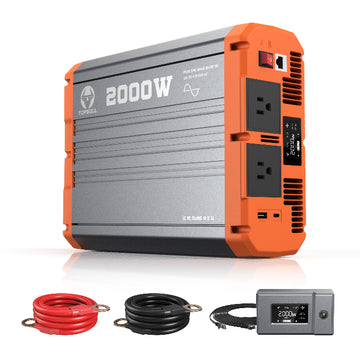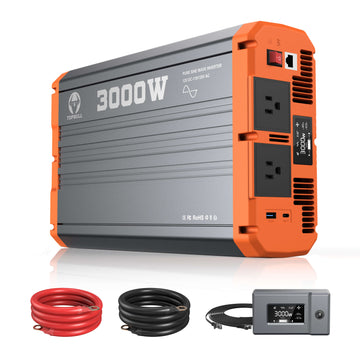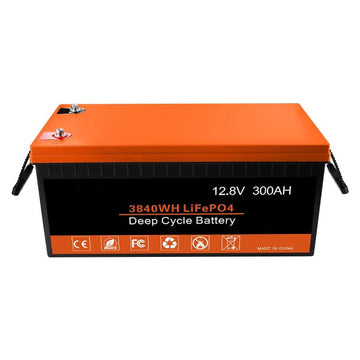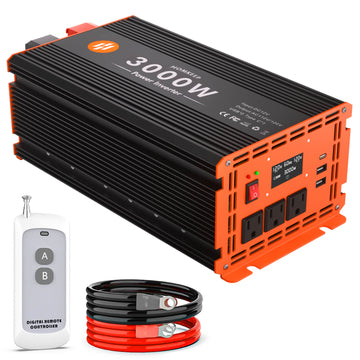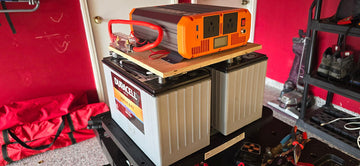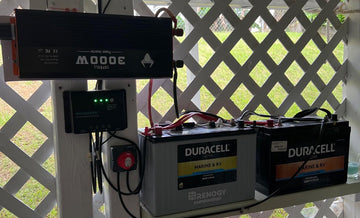Table of contents:
Against the background of increasing energy constraints and growing demand for renewable energy, the application of lithium-ion batteries has become more and more widespread. As an emerging lithium-ion battery, lithium iron phosphate (LiFePO4) stands out with its unique advantages, and the performance and life cycle of LiFePO4 batteries have attracted a lot of attention. In this paper, we will discuss the life cycle of LiFePO4 batteries in depth, and analyze LiFePO4 batteries, an energy solution, in all aspects, from the definition, advantages to the service life, and then the methods to extend the service life.
What is lithium iron phosphate battery
Lithium Iron Phosphate (LiFePO4) battery is a type of lithium-ion battery whose cathode material consists of Lithium Iron Phosphate (LiFePO4). Compared with traditional lithium cobalt oxide batteries, LiFePO4 batteries excel in safety, stability and cycle life. Due to its excellent thermal stability and low environmental impact, LiFePO4 batteries are widely used in electric vehicles, energy storage systems and various portable devices.
Features of LiFePO4 battery
- High safety: LiFePO4 battery material has good thermal and chemical stability, and is not easy to catch fire and explode even under extreme conditions such as short circuit and overcharging, so LiFePO4 battery is considered to be one of the relatively safe battery types.
- Long cycle life: The cycle times of LiFePO4 batteries are usually up to 2000 times or more, much higher than some traditional lithium-ion batteries. This means that under normal use conditions, LiFePO4 batteries can maintain stable performance for a longer period of time, reducing the frequency and cost of battery replacement.
- Environmentally friendly: LiFePO4 battery does not contain harmful substances such as lead, cadmium, mercury, etc., so it is environmentally friendly. At the same time, the battery can be recycled, further reducing the impact on the environment.
- High thermal stability: Compared with other types of lithium-ion batteries, LiFePO4 batteries are more stable in high-temperature environments, greatly reducing the risk of overheating, combustion or explosion.
- Fast charging: LiFePO4 battery has a faster charging speed, can be fully charged in a shorter period of time, saving time for users.
- Low self-discharge rate: LiFePO4 batteries lose power slowly when not in use for a long period of time, which makes them more suitable for use in occasions that require long-time backup power.
How long does a LiFePO4 battery last?
Cycle life
The cycle life of a LiFePO4 battery is one of the most important indicators of its useful life. Cycle life refers to the number of times a battery can maintain its capacity during charging and discharging. Typically, the cycle life of LiFePO4 batteries can reach more than 2,000 cycles, which means that the batteries can maintain stable performance for a long time under normal usage conditions. However, it should be noted that as the number of cycles increases, the capacity of the battery will gradually decay, but at a relatively slow rate.
Storage Life
In addition to cycle life, the storage life of LiFePO4 batteries is also an important aspect of their service life. Storage life refers to the amount of time a battery can maintain its capacity during storage. Generally speaking, storing LiFePO4 batteries under proper temperature and humidity conditions can extend their storage life.
LiFePO4 batteries typically have a cycle count of between 2,000 and 5,000 cycles. Assuming that the user performs a complete charge/discharge cycle on the battery once a day, the LiFePO4 battery can theoretically be used for about 2,000 to 5,000 days, so in general, under good use and maintenance conditions, the LiFePO4 battery's service life can be up to 5-15 years,and for some excellent deep-cycle batteries, such as the TOPBULL Mall-recommended 12V 100Ah deep cycle LiFePO4 battery , the service life may be even longer!
Key Factors Affecting LiFePO4 Battery Life
The key factors affecting the life of LiFePO4 (lithium iron phosphate) batteries include the following:
1. Temperature
- Temperature extremes: Whether high or low, temperature extremes can cause irreversible damage to the chemistry of LiFePO4 batteries and shorten their overall lifespan.
- Ideal Operating Temperature: It is recommended that LiFePO4 batteries be stored and used within a temperature range of -4°C to 20°C (also stated as 20°C to 25°C) for optimal performance and service life.
2. Charge and Discharge Rates
- Effects of charging and discharging too quickly: Charging or discharging a battery too quickly can lead to heat buildup, which can damage the internal components of the battery and shorten its overall life.
- Moderate Rate Recommendation: It is recommended that LiFePO4 batteries be charged and discharged at moderate rates to prolong their service life.
3. Depth of Discharge (DoD)
- Definition: Depth of Discharge is the percentage of energy released from the battery before charging to the total capacity of the battery.
- Impact: Depth of discharge has a significant impact on the life of LiFePO4 batteries. Discharging too deeply can cause irreversible damage to the battery's chemistry, resulting in a shorter life.
- Recommendation: It is recommended that the DoD of LiFePO4 batteries be kept below 80% to maximize their service life. This is because a shallower depth of discharge reduces the intensity of stress and chemical reactions within the battery and slows down the aging process.
4. Cycle count
- Definition: The number of cycles is the number of times a battery can be charged and discharged.
- Impact: Most LiFePO4 batteries can last thousands of cycles before they begin to degrade, but the exact number of cycles may vary depending on the quality of the battery, usage patterns, and other factors.
- Extend Life: Reasonable control of the number of charge/discharge cycles and avoiding frequent deep charging and discharging will help extend the overall life of the battery.
5. Other Factors
- Battery Management System (BMS): An efficient BMS can monitor the status of the battery and prevent unfavorable conditions such as over-charging, over-discharging, over-current, and over-temperature from occurring, thus protecting the battery and prolonging its service life.
- Battery design and manufacturing quality: The design and manufacturing quality of the battery also directly affects its service life. High-quality batteries are more stringent in material selection, process control and quality control, and therefore have a longer service life.
- Use and Maintenance Practices: Proper use and maintenance practices are also key factors in extending the life of LiFePO4 batteries. For example, avoiding exposing the battery to extreme temperatures, cleaning the surface of the battery regularly, and dealing with battery malfunctions in a timely manner can effectively extend the life of the battery.
Signs of aging in liFePO4 batteries
Aging of LiFePO4 (Lithium Iron Phosphate) batteries is a natural process, and their performance will gradually degrade with use. Understanding the signs of aging can help users take timely action to extend the life of the battery. The following are some common signs of aging in LiFePO4 batteries:
1. Decreasing Capacity
The overall capacity of a battery is an important indicator of its health. As a battery ages, its charging capacity will gradually decline, which may manifest itself as the inability of the battery to reach its previous charge level under the same charging conditions. For example, a battery that was originally capable of storing 100Ah may only be able to store 80Ah or less after aging.
2. Weakened discharge capacity
Aging LiFePO4 batteries may not be able to provide their rated output power when discharged. At high current discharges, the voltage of the battery may drop rapidly, resulting in reduced performance or even inability to meet the needs of the device.
3. Decline in charging and discharging efficiency
As a battery is used, its charging and discharging efficiency may deteriorate, meaning that the ratio of power charged to power discharged decreases. This may lead to an increase in the time required for charging, as well as a decrease in usage time.
4. Appearance changes
Appearance changes such as swelling, distortion, or cracking may occur on the surface of aging LiFePO4 batteries. These physical damages may be a sign of chemical reaction or aging within the battery, indicating that the battery may face a safety hazard.
5. Abnormal heating
If a battery overheats during charging or discharging, an abnormal reaction may be occurring internally, which is often a sign of aging or damage. Healthy LiFePO4 batteries do not exhibit severe overheating under normal operating conditions.
6. Significant increase in charging time
As the battery ages, the charging time may increase significantly. If the charging time of the battery is significantly higher than its normal level under the same conditions, it may mean that the internal chemistry of the battery is reduced and there is a problem with the charging efficiency.
7. Cycle life reached its limit
Every LiFePO4 battery is designed with a rated cycle life. In general, a good LiFePO4 battery can withstand more than 2000 charge/discharge cycles. If the battery has approached or exceeded this number of cycles, performance degradation is inevitable.
8. Strange odor or gas release
If, during charging or use, the battery is found to be releasing odors or generating gases (e.g., swelling and leaking), this may be a sign of a serious internal malfunction, indicating that the battery has been aged or damaged.
How to Extend the Life of LiFePO4 Batteries
Extending the life of LiFePO4 (lithium iron phosphate) batteries can be accomplished through a number of best practices. These include proper charging practices, good usage habits, and environmental controls. The following are some effective methods:
1. Optimize charging habits
- Use the right charger: Choose a dedicated charger suitable for LiFePO4 batteries and avoid incompatible chargers to minimize the risk of charging overshoot or overdischarge.
- Avoid overcharging and overdischarging: Try to ensure that the battery's charging voltage does not exceed the maximum rating (usually 3.65V), while avoiding discharging the battery to too low a voltage (e.g. below 2.5V).
- Regular charging: Even when not in use, the battery should be charged regularly to keep it in good condition.
2. Control charging and discharging rates
- Avoid rapid charging: Although rapid charging is convenient, frequent use will have an impact on battery life. It is better to use the standard charging mode to extend the cycle life of the battery.
- Slow discharge: When using the battery, try to avoid high rate discharge, which can reduce the stress on the battery.
3. Maintain appropriate temperature
- Avoid extreme temperatures: Keep the battery within the appropriate temperature range (generally 0°C to 45°C is preferred), high temperatures will accelerate the aging of the battery, while low temperatures may lead to capacity loss.
- Cooling: Ensure the battery has good heat dissipation during charging and discharging to prevent overheating.
4. Avoid deep discharge
- Reasonable charging and discharging depth: try to control the battery's discharging depth between 20% and 80%, avoid frequent complete discharging, which can effectively prolong the battery life.
5. Regular maintenance
- Check the battery condition: Regularly check the appearance of the battery and the connection points to ensure that there is no corrosion and physical damage.
- Clean contact points: Keep the contact points of the battery clean to ensure good current conduction.
6. Avoid prolonged storage
- Regular use: If the battery will not be used for a long period of time, it is recommended that it be charged every few months and stored in a dry and cool place.
- Set storage mode: If the battery will not be used for a long time, it is better to charge it to about 50% for storage.
7. Choose quality products
- Purchase high quality batteries: Choose products with well-known brands and good ratings, these batteries usually have better performance and longevity.
8. Use the right load
- Match the battery to the application: Ensure a match between the battery and the equipment it is used in, and avoid using the battery in equipment that is loaded beyond its current rating.
By taking the above steps, the life of a LiFePO4 battery can be significantly extended, ensuring optimal performance over the life of the battery. Proper maintenance and usage practices will result in a more cost-effective investment as well as improved safety.
FAQs
What applications are LiFePO4 batteries suitable for?
LiFePO4 batteries are widely used in electric vehicles, solar energy storage systems, UPS power supplies and mobile devices.
How long is the cycle life of LiFePO4 battery?
The cycle life of LiFePO4 battery can usually reach more than 2000 cycles, and some excellent products can even reach more than 3500 cycles. In the energy storage market applications, the requirements may be higher, can reach more than 4000-5000 times, can ensure the service life of 8-10 years.
How does LiFePO4 battery perform at high and low temperatures?
- High temperatures accelerate the aging of the battery and may lead to performance degradation and safety hazards, the ideal operating temperature is 20°C to 30°C.
- Low temperatures may cause a drop in battery capacity, and at extreme low temperatures (e.g. below -20°C), the battery's discharge capacity will be significantly reduced.
Can LiFePO4 batteries be fully discharged?
Although LiFePO4 batteries have good discharge-related performance, it is not recommended to discharge them completely (i.e., to below 2.5V), which will reduce the battery's service life. Usually it should be kept in the range of 20% to 80% charge.
Does LiFePO4 battery have memory effect?
LiFePO4 batteries do not have a memory effect like traditional NiCd batteries, so they do not need to be recharged every time they are fully discharged. They can be recharged at any charge level.
Can LiFePO4 batteries continue to be used after 8 years?
Whether LiFePO4 batteries can still be used after 8 years depends on their usage conditions and maintenance. The life of LiFePO4 battery can be prolonged if proper charging and usage methods are followed and proper ambient temperature is maintained during use. However, with the passage of time, the capacity of the battery will still be degraded to a certain extent. Therefore, for safety and stable performance considerations, it is recommended that users follow the manufacturer's recommended replacement intervals and maintenance guidelines.

